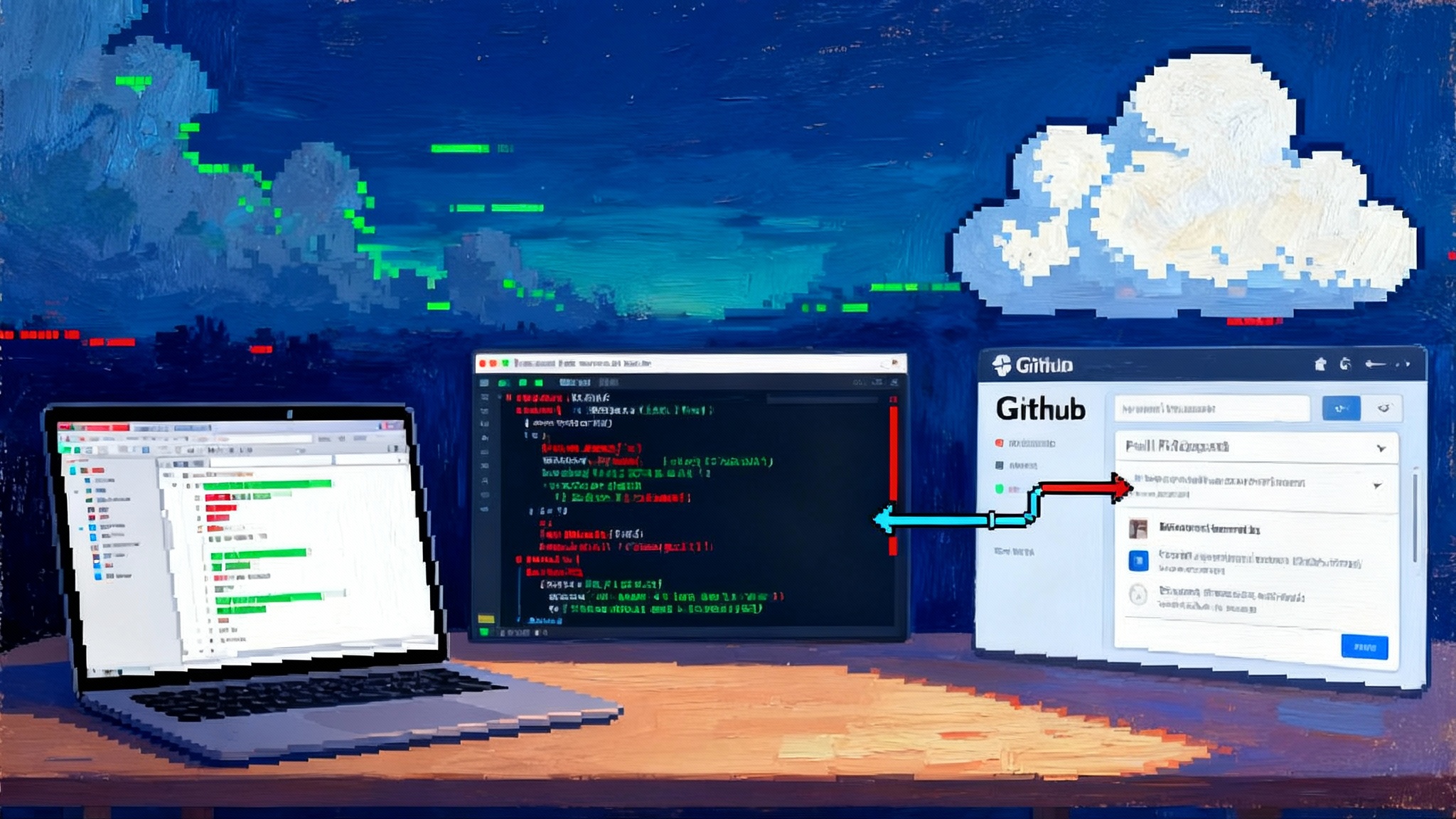Voice‑native agents arrive with Gemini Live audio
End-to-end voice models are leaving ASR-to-LLM-to-TTS pipelines behind. See how Gemini Live’s native audio changes latency, barge-in, emotion, and proactivity, what it enables across devices, where it still falls short, and how to build a production-ready agent now.

From cascades to conversation
For a decade, voice assistants ran a three-stage relay: speech into ASR, text into an LLM, reply into TTS. That cascade delivered useful features, yet it felt like taking turns on walkie talkies. Latency ballooned at every handoff, prosody was bolted on after the fact, and interruptions were brittle. Voice-native models change the shape of the problem. Google’s Gemini Live preview adds a native audio path where the same end-to-end model listens, plans, and speaks. Output is generated as audio with timing, emphasis, and affect that the model controls directly. It supports barge-in via voice activity detection, canceling a response the instant a user interjects. It also unlocks affective conversation and proactive audio. Google’s developer docs describe these capabilities and distinguish native audio from a half-cascade alternative, including VAD, session limits, and tool constraints in the Gemini Live native audio guide. The result is a qualitative shift. With cascades, speech is converted to text early and intonation is reconstructed at the end. With native audio, timing and tone sit inside the reasoning loop. The agent can start speaking before it has a full sentence, stop mid-word if the user cuts in, or use an upward lilt that invites a quick reply.
What native audio actually changes
Here are the core differences you will notice when you build or use a native audio agent.
- Continuous turn-taking: Voice activity detection and server-side interruption let users barge in at any time. When interruption fires, the model discards the rest of its planned audio and immediately transitions to listening.
- Prosody inside the loop: The model chooses speaking rate, pauses, and emphasis while it reasons. That reduces robotic cadence and improves comprehension for complex instructions.
- Affective conversation: The model can mirror or modulate tone. Calm reassurance after an error, urgency when a deadline is tight, lighter energy for a casual chat.
- Proactive audio: The agent can decide when to speak without a direct question. Used well, this collapses extra turns and makes interactions feel cooperative rather than transactional.
- Lower perceived latency: Even if compute time is similar, speaking the first syllables while thinking about the rest makes conversations feel snappier.
Humans judge responsiveness by first audio, not final punctuation. Half-cascade still has a role. Google exposes a half-cascade Live model that uses native audio input with TTS on the way out. It tends to do better today when you rely heavily on tools and structured function calls. Native audio is the frontier for naturalness and multilingual expressivity. Half-cascade is the safer bet when you need strict tool reliability and predictable output formatting.
New possibilities across surfaces
Voice-native behavior matters most when people are busy with their hands or eyes and where timing and tone carry meaning.
- Call centers and service desks: Barge-in is essential. Native audio lets an agent start a short confirmation while it looks up an account, then yield instantly if a customer interjects. Affective control helps de-escalate or brighten tone as needed. Proactive audio enables progress markers like short status cues that reduce silence anxiety.
- In-car assistants: Drivers interrupt constantly. A native audio agent can begin a route explanation, stop as the driver says no tolls, and resume with updated directions without an awkward reset. Brief proactive cues like approaching heavy traffic in 3 minutes can be short and unobtrusive.
- TVs and living-room devices: On shared screens, timing often matters more than exact wording. Proactive audio is useful for short notifications that respect the moment, like your show restarts in 10 seconds. Affective conversation can shift from playful to neutral depending on context. For broader context on where screens and agents converge, see our browser becomes an agent analysis.
- Wearables and hearables: Watches and earbuds live in micro-interaction land. A native audio agent can acknowledge with a half-beat got it while submitting a calendar change in the background, and should immediately stop and listen if you speak over it. These patterns rely on strong defaults: instant barge-in, short utterances that invite interruption, and judicious use of proactive audio that never overwhelms. ## What is still hard today Preview-native audio is exciting, but there are practical limits to plan around.
- Tool use maturity: Native audio models have limited tool support in preview, while the half-cascade path is more reliable for structured function calls. Start tool-heavy agents with half-cascade and graduate to native audio as reliability improves.
- Session constraints: Audio-only sessions are time-bounded, and audio plus video has shorter limits. Your client must handle session refresh with ephemeral credentials and seamless context carryover.
- Conversation state drift: Real-time barge-in can cancel mid-generation tool calls. You need idempotent tools and a transaction log so the assistant can reconcile partial actions after interruptions.
- Prosody control is emergent: You can prompt for tone and style, and native audio models are good at it, but they are not full-blown audio workstations. Plan audio QA and rubric-driven listening tests.
- Telephony, WebRTC, and device capture: Real-time pipelines are sensitive to jitter and echo. You will need robust acoustic front ends, AGC and AEC tuning, and VAD thresholds that fit your environment.
How it stacks up against OpenAI’s real-time and Operator approach
OpenAI’s Realtime API also targets low-latency, interruptible, multimodal conversations and is now broadly available. The company’s public timeline shows a 2024 beta, expanded audio features through late 2024, and general availability on August 28, 2025, as outlined in the Realtime API announcement and updates. The Realtime API gives you event-level control via WebRTC or WebSocket, fine-grained item timelines, server-side VAD, and stream truncation for barge-in. Where the stacks feel different:
- Emphasis: Google is pushing a true native audio model path, where the model speaks and listens as a single multimodal loop and exposes proactive and affective features inside the model’s design. OpenAI’s Realtime emphasizes a transport and session model with strong controls and industry-grade media plumbing. In practice, both can deliver fast barge-in and expressive speech.
- Tool reliability: Today, Google positions half-cascade for better tool use and native audio for expressivity. OpenAI’s Realtime pairs well with function-calling ecosystems and Assistants abstractions that are battle-tested for tools. If your use case is tool-heavy with strict SLAs, OpenAI’s stack or Google’s half-cascade may have an edge. - Agents that act: OpenAI’s Operator preview focused on a computer-using agent that controls a browser and automates tasks. For voice, keep a real-time layer that talks and an agent layer that acts so you can evolve the action brain while the voice interface improves.
- Multiplatform reach: Both ecosystems support WebRTC and mobile. If you live deep in Android, Auto, TV, and Wear, Gemini Live will benefit from native hooks. If you are invested in OpenAI’s models and tools, Realtime lets you plug in with minimal rewriting. Bottom line: You can build excellent speech-to-speech experiences on either stack. Gemini Live’s native audio is the furthest push into model-driven tone and timing. OpenAI’s Realtime is a mature session and events layer that deploys widely today.
Build guide: ship something end to end in 6 weeks Pick a narrow use case with a tight latency budget and obvious barge-in value. Then design for interruption first.
1) Choose your audio path
- Try native audio when naturalness and affect matter more than perfect tool determinism. Plan tool calls as optional and idempotent. Keep responses short by default.
- Use half-cascade or a non-native path when your agent must call tools in a fixed sequence and return structured outputs on every turn. You can still deliver fast first-audio and barge-in with careful streaming.
2) Latency budgets that feel human
Targets that are achievable on commodity devices and stable networks if you stream everything and avoid blocking calls:
- Time to first phoneme: 200 to 350 ms from end of user speech to start of agent audio.
- Barge-in detection: under 50 ms from user voice onset to cancel the agent. - Tool call budget per turn: 300 to 600 ms for simple reads, up to 1200 ms for action turns, with a spoken progress cue if you exceed 500 ms of silence.
- End-to-end turn time: 1.5 to 3.0 seconds to reach the final syllable, but do not over-optimize this relative to first audio.
3) Conversation design for interruption
- Write micro-utterances that can be cut without losing meaning. Prefer I can do that, booking now over a long preamble.
- Insert ask-pauses with rising intonation and a 300 to 500 ms gap. This invites natural interruption for yes or no without explicit prompting.
- Use proactive audio sparingly: progress markers, gentle safety warnings, and time-sensitive nudges.
4) Tooling and state
- Make tools idempotent and transactional. Log request IDs so a canceled turn can be retried safely.
- Maintain a server-side turn ledger. If the model is interrupted mid-call, reconcile on the next turn before speaking.
- Provide a short text mirror of what was said and done for accessibility and auditing.
5) Safety, consent, and privacy UX
-
Explicit consent: Before the first open microphone, present a one-tap consent that covers continuous listening, proactive audio, and barge-in. Refresh consent when modalities change, such as when activating the camera.
-
Clear status and escape hatches: A visible listening indicator, a hardware mute shortcut, and an always-available stop phrase.
-
Data boundaries: Use ephemeral tokens for client-to-server auth. Store transcripts only when necessary and show users where to delete them.
-
Recording notifications: Provide audible or visual cues if the session is recorded and make them persistent.
-
Sensitive contexts: Lower output volume for private contexts like cars with passengers. Confirm before committing purchases or irreversible actions.
-
Human fallback: In service workflows, let users escalate to a person and pass along a concise state summary. For why observability and control are the moat, see AgentOps as the moat.
-
- Test like a sound engineer
-
Measure real user barge-in timings, jitter sensitivity, and echo failures in noisy rooms and cars. - Establish a prosody rubric. Rate clarity, warmth, and confidence on a 1 to 5 scale in weekly listening sessions. - Collect frustration signals. Interruptions within the first second of agent speech often signal that the agent talked past the user. ## A simple reference architecture - Client: Mobile app or web page that captures audio, streams over WebRTC, renders partial audio immediately, and cancels playback on interruption events. - Voice brain: Gemini Live native audio for expressive conversations, or a half-cascade or OpenAI Realtime model when tool determinism or integration maturity is the priority. - Action brain: A separate agent service that decides when and how to call tools, validates outputs, and writes to a turn ledger. Keep the voice brain loosely coupled via events. If you are weighing cloud choices, see how AWS positions its stack in AWS Quick Suite for agents. - Tools and data: Start read-only. Add write actions behind confirmation prompts. Rate-limit action turns to prevent runaway loops. - Observability: Capture timing events for first audio, barge-in, tool round trips, and failure reasons. Plot them daily. ## Roadmap: what to watch in the next 6 to 12 months - Tool use parity for native audio: Expect Google’s native audio path to close the gap with half-cascade for function calling and structured outputs. - Richer affect controls: More reliable control tokens for tempo, energy, and emphasis. Teams will move from vibe prompts to consistent style guides. - Better proactive policies: Clearer server-side controls for when the model may speak unprompted and how long, with tighter defaults to reduce chatty agents. - Device reach and integrations: Deeper hooks in Android Auto, Google TV, Wear, and comparable integrations in the OpenAI ecosystem. - Compliance kits: Sample consent flows, recording indicators, and redaction pipelines for regulated industries. - Pricing and caching: As audio token caching and server hints mature, real-time costs will drop and enable always-on assistants for cars and TVs. - Memory and personalization: Controllable short-term memory with safety rails so the voice stays consistent across sessions without drifting. - Enterprise policy layers: Admins will want policies for proactive audio, recording retention, and allowed tool domains, with platform-level enforcement. If you have been waiting for voice that actually feels conversational, now is the time to prototype. Start with a single flow that benefits from interruption and tone. Keep the action brain modular. Hold yourself to human expectations on timing and courtesy. The technology is finally bending to those rules. ## Where to go deeper For developers evaluating Gemini Live’s capabilities and constraints, Google’s documentation covers native audio, VAD, session behavior, and tool support in the Gemini Live native audio guide. For teams comparing stacks or already invested in OpenAI’s ecosystem, the Realtime API announcement and updates page traces capabilities, transport options, and availability updates.








